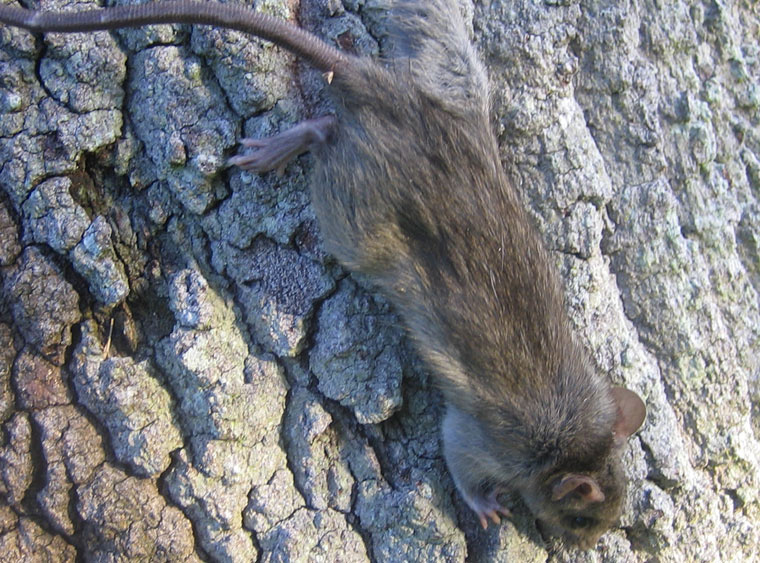- info@wildlife-removal.com
Call us for help in your town
Wildlife Removal Education
21 Simple Tips to Keep Rats Out of Your Garden
Need rat removal in your hometown? We service over 500 USA locations! Click here to hire us in your town and check prices - updated for year 2020.
We'll get to the point - there are a number of modifications that you can add to your garden and property to keep rats out, but the more of them you use together, the easier your job will be.

These 21 simple tips to keep rats out of the garden will help to control a rat population, but may not work entirely to get rid of a large or stubborn infestation.
1 - Bring in the bird feeder to stop rats from eating the seeds and nuts that fall to the floor.
2 - Don't leave cat or dog food out.
3 - Trim back trees that lead to your property or fences to make access more difficult.
4 - Add peppermint oil to areas of high rat activity or grow it in pots/ground to work as a natural repellent (that isn't guaranteed to work, but there's no harm in giving it a try.)
5 - Inspect the exterior of the building for signs of rats and potential entry points.
6 - Inspect the interior of the building for signs of rats and potential entry points.
7 - Seal any holes that you do see with a hard metal-based material that rats can't easily chew through.
8 - Place rat traps in indoor areas where rat signs are spotted.
9 - Repair areas of damage or reinforce patches where future damage could easily occur.
10 - Move garbage bags indoors or to a metal dumpster/garbage can that has a lid.
11 - Clean up garden debris and other mess that could offer up a nesting spot or hiding spot for rats and other small pest animals.
12 - Cut back undergrowth or plant life that is overgrown/messy/offers potential hiding spots.
13 - Move compost heaps to a secure container and make sure you follow the rat-proofing steps necessary to protect the heap too.
14 - Make sure that food for chickens and other animals isn't left easily accessed overnight.
15 - Move food sources that seem to get hit every night, indoors over night.
16 - Clean away all fruits that fall from trees immediately and trim back branches that are easily accessible to rodents.
17 - Add "safety cages" to plant life that gets eaten by rats a lot, or where you have seen rat poop. A wooden framework with small mesh wiring or hardware cloth pulled and affixed over it can often do the trick, as long as the rat can't chew through the wood and get in, and that the entire structure is thoroughly secured.
18 - Move any lumber piles away from the floor and secure them so that rats can't use them as a potential nesting spot.
19 - Secure outbuildings, such as sheds, garages, barns, etc. in the same way that you would rat-proof and secure your home. Again, make sure that all feed/sources of food is sealed in containers that can't be accessed or chewed by rats.
20 - Control insect populations in the back garden. Rodents, much like plenty of other scavengers, will devour insects when given the chance, so by keeping numbers down using insecticides (natural or otherwise), you can help to keep pests out too.
21 - Use large, covered-over live traps for places where snap traps aren't a viable option; such as, when they could be accessed by other animals or children.
Go back to the Rat Removal page, or learn tips to do it yourself with my How to Get Rid of Rats guide.


















